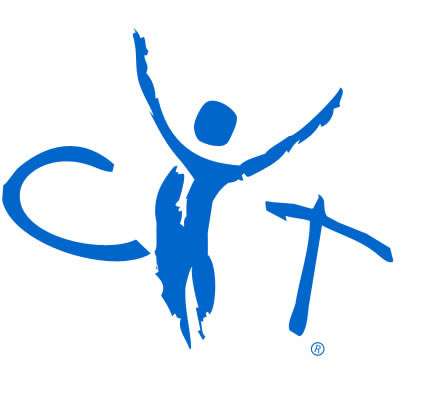On May 3, 97-year-old Myrtle Humble underwent transcatheter aortic valve replacement, or TAVR, at Via Christi Hospital St. Francis — a procedure that has brought renewed hope for patients whose hearts are failing because of severe aortic stenosis.
St. Francis is part of Via Christi Health, a member of Ascension.
In doing so, Humble became the first patient to undergo the procedure at the Wichita hospital under conscious, or minimal, sedation.
“I feel good,” said Humble as she was preparing to be discharged three days later to a skilled nursing facility to further recover for a couple of weeks before returning to the senior living facility where she enjoys playing bingo and cards with friends. “I can’t even tell I had anything done.”
On May 10, 72-year-old Robert Dilli also underwent a TAVR procedure with minimal sedation at St. Francis — and was headed home after a three-day hospital stay.
Having had quintuple bypass surgery in 2009, Dilli said he didn’t want to undergo another open-heart procedure unless it was his only option.
Fortunately, it wasn’t.
Given his prior surgery and other medical conditions, the Structural Heart team determined that TAVR with minimal sedation was Dilli’s best treatment option.
“It was great knowing that Dad wouldn’t have to be on a ventilator,” says Dilli’s daughter, Haley Busch, who works as a respiratory therapist at another Wichita hospital. “His oxygen stats are better than they’ve ever been and because he’s been able to eat, he’s regaining his strength faster.”
Humble, TAVR patient No. 178, and Dilli, No. 182, are among the more than 200 patients to undergo TAVR at St. Francis since the first one was performed two and half years ago in its Hybrid OR.
The initial goal was to perform 40 TAVR procedures in the first two years. Instead, Via Christi’s TAVR program has averaged double that number with outcomes — as measured by its post-procedure complications, 30-day and 1-year mortality rates and length of stay — that are better than the national average.
Going forward, the demand is expected to grow at an even faster clip as the national guidelines as to which patients are good candidates for TAVR is expected to be expanded to include younger and healthier patients.
“TAVR is no longer be the procedure of last hope, but instead is becoming the go-to procedure for people with aortic valve disease,” says Bassem Chehab, MD, medical director for the Via Christi’s Heart Valve Clinic and Structural Heart program, which includes a team of cardiologists, cardiovascular surgeons, anesthesiologists and dedicated OR and heart catheterization lab staff.
“The question is changing from ‘Why TAVR?’ to ‘Why would we not do TAVR?’” says Chehab — both in national forums as well as in Kansas as TAVR is quickly becoming a leading therapy across all spectrums of aortic valve disease.
“Today, we are the area’s leader in the structural heart field,” says Chehab. “Reaching the 100 TAVR milestone demonstrated our ability to safely offer the procedure with consistently good results. “Reaching 200 validates our ability to tackle complex cases with equally good and consistent outcomes.”
Establishing a footing
The roots of Via Christi’s Structural Heart program can be traced to a conversation with community physicians in 2012. A hybrid operating room and establishment of a structural heart program was needed, they said, in order to meet the needs of Kansas patients now and in the future.
So Via Christi and the physicians collaborated on a plan to bring TAVR procedures and other emerging, life-saving structural heart procedures to the region.
Chehab was recruited to serve as the program’s medical director, making regular trips from Kansas City, where he was completing his structural heart fellowship, to participate with the group in designing what today is the region’s only technologically advanced hybrid OR and structural heart program.
Less than a year later, the hybrid OR was ready for use at St. Francis and the first TAVR was performed on Oct. 17, 2013.
Chehab credits the program’s success to the TAVR team, which include surgeons Sanjay Khicha, MD, and Brett Grizzell, MD, both with Wichita Surgical Specialists; cardiologist Richard Steckley, MD, Cardiovascular Consultants of Kansas; and anesthesiologists David Havey, MD, and Sinisa Malinovic, MD.
His colleagues concur.
“Working as a team has allowed us to become highly efficient and proficient in performing these cases,” says Khicha.
—————————–
About aortic stenosis and TAVR
Aortic valve stenosis is among the most common cardiac diseases in the United States. About 5 million people are diagnosed with heart valve disease annually, of which a third have an obstruction or hardening of their aortic valve, significantly decreasing blood flow through their aorta.
Severe aortic stenosis usually occurs in those over the age of 75, and some of those patients have significant comorbidities, such as COPD and chronic kidney disease, that preclude them from undergoing open-heart surgery.
When it is severe enough, the aortic valve may be replaced with a prosthetic one. Although surgical aortic valve replacement, or SAVR, continues to be an established and effective treatment for aortic stenosis, many of these most fragile patients aren’t good candidates for an open-heart surgery. Without treatment, however, the mortality rate after the onset of symptoms for severe aortic stenosis is 50 percent at two years and 80 percent at five years.
In November 2011, the Food and Drug Administration approved a transfemoral procedure that delivers an artificial aortic valve in the same manner as a heart catheterization procedure. In October 2012, a transapical procedure to implant an artificial valve was approved. These procedures allow inoperable and high-risk patients to be treated in a way that doesn’t require open-heart surgery.




